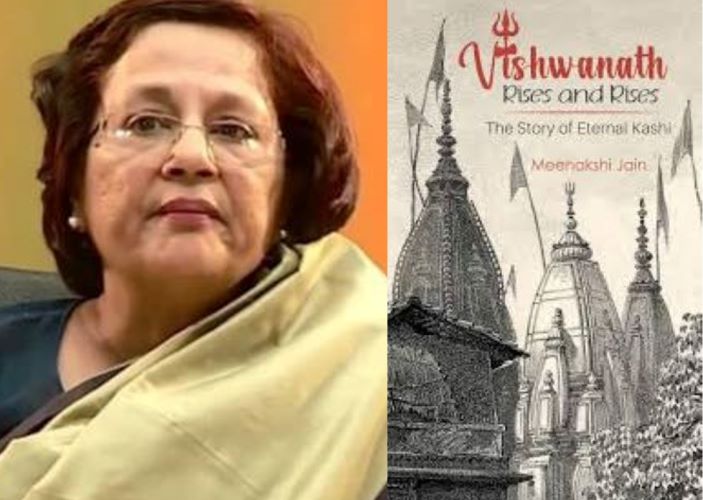READ KASHI’S FASCINATING FACTS

Rajkumari Sharma Tankha
Meekanshi Jain’s Rama and Ayodhya (2013), made a historical case for the Ram Temple in place of the Babri Masjid. And her Vishwanath Rises and Rises: The Story of Eternal Kashi (Aryan Books), published last month, does so for Kashi Vishwanath temple in place of a mosque.
One of the oldest inhabited cities on the planet, Kashi is intricately linked to Hindu civilisational heritage, the Sanatana Dharma. And Vishwanath Rises and Rises provides a historian’s perspective on the antiquity of the city and its importance to Hindus, reminding us in no uncertain terms, of our duty towards the preservation and enrichment of The City of Light.
Most of us know that the Kashi Vishwanath Mandir was demolished on the orders of Aurangzeb in 1669, but Jain, an associate professor of History at Gargi College, University of Delhi, tells us that Kashi desecration dates much further back, to earlier Islamic depredations. Why? Simply because Kashi enjoyed an exalted status among Hindus!
The first recorded attack was by a son of Mahmud of Ghaznavi, which did not quite impact the key temples, but the following one by Qutbuddin Aibak in the 12th century CE, and the next one more than three centuries later by Sikandar Lodi, was brutal and meant destruction of all symbols of Hinduism, ‘the kafir icons’. Aurangzeb’s was only the third major desecration.
Tracing the ancient history of Kashi from the Vedic (Chapter 3, Rediscovering Ancient Kashi) to the medieval times, Vishwanath Rises and Rises gives us a deep insight into what all Kashi has braved over the centuries. It tells us, in every possible detail, how the city was destroyed time and again, but reclaimed each time by the Hindus, which also led to a change in the architectural landscape of the city – each time the city was destroyed, the temples were relocated and evicted deities found shelter in new shrines (Chapters 10 and 12).
How the temples in Kashi led to a rich social, intellectual and economic life in the city has also been spoken in detail. How different sections of the society, be it the Rajput kings, the Maratha Peshwas, the zamindars of Bengal, and others like Raja Patnimal (who also took up cudgels on behalf of Shri Krishna Janmabhoomi in Mathura back in 1832), fought for Kashi, never giving up on their revered city of Mahadev is also there in much details. It tells us, that Marathas under the Peshwas were particularly devoted to restoring Kashi to its Hindu ownership, and the current Kashi Vishwanath temple was built by Ahilyabai Holkar.
The book makes for a delightful reading, as it tells us about the religious significance of Kashi with historical evidence and archaeological findings as a proof. Divided into 21 short chapters, written in simple, lucid English, the book also talks about the numerous devatas, and their abodes (devasthanas) in the city.
Vishwanath Rises and Rises is a must read for all Bharatiyas, not just those battling in the courts, because it is factual and can sooth many a frayed nerves, for truth alone has the ability to bring respite.


